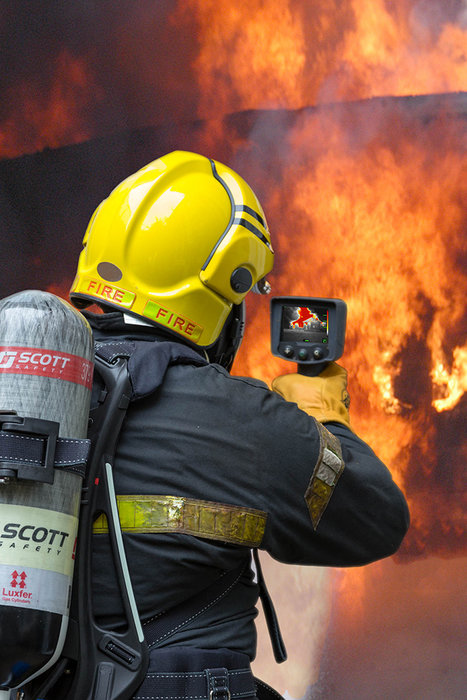www.industry-asia-pacific.com
04
'16
Written on Modified on
Beating the heat with Scott Safety
How providing the correct PPE equipment is essential in reducing the risk of heat stress

According to the UK’s Health & Safety Executive (HSE), heat stress occurs when the body’s means of controlling its internal temperature, such as sweating, starts to fail. Symptoms of the condition can include: fainting, heat stroke, heat exhaustion, muscle cramps, heat rash and severe thirst.
In addition to climatic changes, heat stress can be induced by other factors such as work rate, worker’s clothing and PPE compatibility. Therefore it is imperative that manufacturers develop equipment that uses lightweight, breathable fabrics and materials where possible. There is a responsibility too on employers to choose the most appropriate equipment for the work and to ensure the correct training is given so that the worker wears the equipment properly.
“Scott Safety invests a considerable amount of time in the development of our personal protective equipment (PPE) to ensure we design lightweight products. We use the best performing materials that offer the correct level of protection,” explains Chris Ellerby, Senior Global Product Manager.
Ensuring workers wear PPE is an on-going challenge, especially if the pieces are not designed to work together. PPE incompatibility makes the equipment uncomfortable and can lead to the worker getting unnecessarily hot; “Our range of PPE has been specifically developed so that it complements each other and can be worn comfortably, regardless of the heat. There is much research to show that good product compatibility will improve the overall comfort for the wearer, regardless of their working environment and therefore ensure that the products will continue to be worn without detriment to the wearer.”
Scott Safety’s range of PPE includes the multiple application bump cap FirstBase 3. This innovative bump cap is designed to provide protection to the wearer against the effects of head striking against hard, stationary objects. It is made from a breathable fabric that allows high levels of ventilation that will reduce heat stress and improve wearer comfort. Additional features of the FirstBase 3 which works to reduce the effects of heat stress include the wide moisture wicking sweatband. Chris Ellerby who has worked on the designs of this product since its inception explained: “Reducing heat and humidity on the head is a key customer need when it comes to bump or head protection in general. Scott Safety has done a huge amount of work in terms of analysing relative humidity on the head and implemented several improvements to improve airflow and permit moisture to be expelled; making the FirstBase bump cap collectively one of, if not the lowest, relative humidity bump caps on the marketplace. ”
However compatibility does not just centre on weight and comfort. There is no governing body that dictates that all equipment must meet certain compatibility standards making it harder for manufacturers to develop product compatibility. Ultimately what this means is that unless equipment is purchased from the same manufacturer and therefore designed to work together, good fit and optimum comfort cannot necessarily be guaranteed. And equipment designed and supplied from one manufacturer will most likely have been approved to work together too.
Working in environments where more substantial personal protection is required such as confined spaces or contaminated air environments is a growing trend in many countries. In these situations increased respiratory protection may well be required and this will involve wearing more complex equipment that could, if not designed well, add to heat stress levels. However, Scott Safety, renowned worldwide for its respiratory protection range, recently launched a new powered respirator specifically designed to reduce weight burden. Wearing a respirator over a period of hours can create a great physiological burden on the wearer because the sheer weight of the kit could increase the effort required to breathe. However, this new design incorporates a curved backplate and lightweight battery ensuring user comfort for long periods of use.
Scott Safety has developed a range of solutions that allow users to work comfortably in intense climates, safe in the knowledge that they are properly protected at all times.
For further information, please visit the Scott Safety’s website at www.scottsafety.com/emea.


